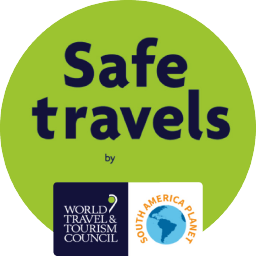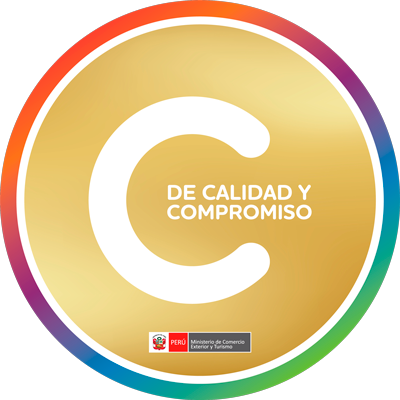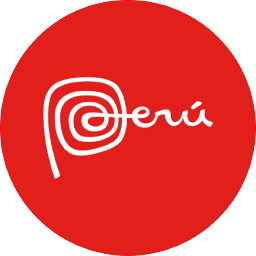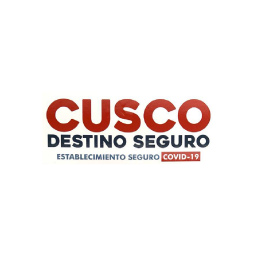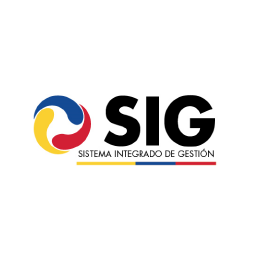
Cusco – South Peru – The Inca Capital
Cusco – South Peru – The Inca Capital
Cusco lays claim to be the oldest continuously inhabited city in the Americas. It was the religious and administrative capital of the far-flung Inca Empire, and the equivalent of Mecca for the Inca’s subjects; every person of importance throughout the empire tried to visit Cusco once in his lifetime. So it is nowadays with tourists. Most travellers usually end up seduced with this vibrant city and stay longer than first planned. The first thing that hits the newly arrived visitor to Cusco are the Inca walls; enormous granite blocks carved to fit together perfectly without the aid of mortar beds. Many of the walls were simply built upon during the construction of a new Spanish city. It’s a tribute to the Incas that their anti seismic design has survived the test of time while the Spanish colonial architecture has been rebuilt several times following a wave of earthquakes that have hit the city. Located at an altitude of 3.360m above sea level, Cusco was referred as the ‘Navel of the World’. Plan to spend at least 3 days in and around Cusco (to get used to the altitude) before starting any serious trekking such as the Inca Trail to Machu Picchu. This is an ideal opportunity to see the highlights Cusco has to offer, such as a tour of the city the nearby Inca Ruins of Sacsayhuaman, Qenko, Pucapucara and Tambomachay,You can visit these places also by horse ! Of course there’s a day trip out to the Sacred Valley of the Incas ,including a visit to the traditional Indian market at Pisac and the beautiful village of Ollantaytambo and Chinchero. Do some amazing rafting /horse riding /rock climbing and much more
The Vilcanota and Urubamba valleys provide fertile land for agriculture, well watered by the many streams fed by glacial snows. The Cordilleras Vilcanota and Vilcabamba today provide some of the best hiking on the continent; not only snow-covered mountains, but subtropical valleys and outstanding Ica ruins attract walkers and trekkers all year around.
History
Few people are aware that the square originally was twice the size it is now and was split in two by a river, the Saphi, which leads into the River Huatanay .The River Saphi today flows beneath the buildings that were built in front of the Cathedral.
Legend says that the ground of the square was made up symbolically of earth brought from all the regions conquered by the Incas. This was apparently supposed to represent the inter-dependence and harmony between all the regions of the Inca Empire.
In the days of the Inca Empire, the square was dominated by an enormous boulder covered with sheets of gold where sacrifices and military and religious ceremonies were held. The spot was called Aucaypata, literally the War Square. Others claim the real name was Huacaypata, literally the Weeping Square, which might have referred to the Inca funerals heldin the plaza. In the years following the Spanish Conquest, Cusco’s main square also saw repeated uprisings and cruel public executions such as that of Tupac Amaru II, the most important indigenous leader of the 18th century. Tupac Amaru led a major uprising against Spanish rule until his capture and execution in 1789.Cusco was the capital of the Inca Empire which extended through the west coast and highlands of the South American continent. It and its surroundings were the first settlement of the Incas, it happened on early 13th century. From that moment, the Inca people developed a kingdom and later an Empire by conquests and wars, but also by agreements with other kingdoms in the Southern highlands (Titicaca Lake), west coast, and Northern coast and highlands. Finally, in early 16th century, it was a big Empire, but the arrival of the Spaniards and the later conquest of the Incas by the Spanish Crown, cut its development.
In 1533, the Spaniards arrived to Cuzco and founded their own city over the Inca city. They destroyed the palaces and temples of the Incas to build on top their churches and mansions. In colonial times, Cusco was a very prosperous city thanks to agriculture, livestock breeding, the mining and commerce. The artisans of Cuzco became famous thanks to its painting and wood-carvings. Nowadays, their art can be seen in museums in Cuzco, the same as historic buildings as the Cathedral, La Compania Church, Santa Catalina convent, etc. places that can be visited during the day.
There are many archaeological sites that can be visited in the city, its surroundings, and in other locations like the Urubamba Valley. The main one in the city is the “Koricancha” (Golden temple, or temple of the sun ), it was the most important temple at the Incas times. Unfortunately, it was partially destroyed by the Spaniards to build a church and a monastery on top, but some remains as chambers, rooms and walls are still to visit. Other ruins close to the city are Sacsayhuaman, Qenqo and Tambomachay. The most interesting is the first one, it looks like a fortress with three large walls of huge stones of 9 meters (30 ft.) height and 350 tons of weight. It was built on the top of a hill beside the city, with a zigzag shape to worship the lightning god.
Climate: It is sunny and warm during the day but cold at night, with a yearly main temperature of 15°C (59°F); nevertheless, the temperature goes down at night in winter (June to August), sometimes, below 0°C (32°F). The rainy season is from the end of November to March, however, it doesn’t rain the whole day, and it’s nice because it turns green all the fields and hills in the countryside.
Landscapes: It’s a perfect combination of Andean and tropical landscapes. One of the best places to enjoy the nature is the Urubamba Valley, known as the Incas Sacred valley, there are snow-capped mountains, eucalyptus tree forests and corn fields beside the river. A succession of picturesque towns with colonial churches, agricultural terraces and many archaeological sites show up along the road. The main spots are Pisac, Ollantaytambo, Yucay and Urubamba

Cusco Tourist Ticket
Admission to the most popular places of interest in Cusco can only be made using a ‘Tourist Ticket’ (Boleto Turistico). This ticket allows you entrance to 16 sites in and around Cusco and is good value at 130SOL (65sol for students with a green ISIC card). The ticket is valid for 12 days and can be bought at the OFEC office at Garcilaso on Plaza Regocijo (Mon-Fri 8am-6.30pm , Sat 8am-2pm) or at the entrée of the museums
Places included on the ticket are:
Within Cusco,Convent of Santa Catalina, Museo de Arte Religio, Museo de Historia Regional, Museo Palacio Municipal and the Museo Arqueologico Koricancha ,musea regional(but not Koricancha itself)local dance performance in centro cultural, monumento Pachacutec
Nearby Inca ruins : The Inca ruins of Sacsayhuaman, Q’enko, Tambomachay and Puca Pucara.
In the Sacred Valley : Pisac, Ollantaytambo and Chinchero. These sites are normally visited as part of the Sacred Valley day tour.
On the road to Urcos: Pikillacta (the only major pre-Inca ruin in the Cusco area) and Tipon (mainly Inca terracing).
Do The Cathedral minates the North-east side of the Plaza de Armas and sits squarely on the foundations of the Inca Viracocha’s palace. The Cathedral construction begin in 1550 and completed nearly 100 years later, constructed in the shape of a Latin cross. The three-aisled nave is supported by only fourteen massive pillars. It contains nearly 400 colonial paintings including the Last Supper by Marcos Zapata showing Christ and the Apostles about to dine on guinea-pig, washed down with a glass of chichi ! In the sacristy there’s a painting of the crucifixion attributed to Van Dyke. Ten smaller chapels surround the nave, with the Chapel of the Immaculate Conception, and the Chapel of El Señor de los Temblores (The Lord of Earthquakes) are worthy of special attention. The Cathedral’s real magic lies in the mingling of history and legend. It is said that when the Cathedral was built an Inca prince was walled up in one of the towers and that when the tower falls the Inca will emerge to claim his birthright and free his people. After the earthquake of 1950 thousands of believers waited hopefully for the tower to collapse, but despite severe damage, they did not and were later repaired.( not included in the cusco ticket entrée 20 sol )
El Triunfo
It’s on the left hand side of the Cathedral and was the first Christian church in Cusco. It was built on the site of Suntur Huasi (the Roundhouse), the main Inca armory where the Spanish were trapped during Manco Inca’s siege in 1536. When the Incas burned the city the thatched roof of Suntur Huasi caught fire, but then mysteriously went out. The Spanish later broke out and recaptured Sacsayhuaman, ending the siege. The church was built to commemorate this victory and the miracle.
Santo Domingo Church, Koricancha (Inca Temple of the Sun).
Santo Domingo was built in the 17th century on the walls of the Koricancha Temple of the Sun. The uninspiring Baroque decoration of Santo Domingo makes a poor contrast to the superbly crafted Inca masonry – in fact much of the cloister has been gutted to reveal four of the original chambers of the great Inca Temple. The finest Inca stonework in existence today is the curved wall beneath the west end of the Church. In Inca times the walls of the Koricancha were lined with 700 solid-gold sheets weighing two kilos a piece. There were life-size gold and silver replicas of corn, golden llamas, figurines and jars. All that remains today is the stonework; the conquistadors took the rest – unfortunately all the exquisite treasures ended up being melted down; nothing survived. However the fist conquistadors to arrive did not remove the holiest religious symbol of the empire, the golden sun disc, though they reported its existence. This solid gold disc, far larger than a man, mysteriously vanished before the main party of Spaniards arrived. It has never been found to the present day. The disc was positioned to catch the morning sun and throw its rays into the gold-lined temple, filling it with radiant light and bathing the mummies of the dead Inca rulers in sunshine which were seated in niches along the walls. The entire temple complex was also an intricate celestial observatory. Every summer solstice, the sun’s rays shine directly into a niche – the tabernacle – in which only the Inca was permitted to sit. Along with the main temple dedicated to the Sun, there were others for the adoration of lesser deities the Moon, Venus, Thunder and Lightning, and the Rainbow. 10 Sol
In the streets below, at nightfall, Cusco takes on an surprisingly cosmopolitan flavour, a lifestyle which it maintains seven days a week. Youngsters from Cusco and abroad alike, flock to the new “temples” of the City of the Sun: teeming bars now have become the legendary sites and attract visitors drawn by the mysticism of the saya, a traditional Andean rhythm. The bars have bewildering names, such as Kamikaze, Ukukus and Mama Africa. These are definitely now the hotspots of the moment for today’s modern tribes. Of course, these “temples” for the dancing crowd are not for the faint of heart! Remember that Cusco lies at 12,000 feet above sea level, and can literally take your breath away.
Starting point of The most famous and amazing trekking route in South America
The Inka Trail (Camino Inca) to Machu Picchu is a must do for every traveler that says to be a trekker. This trekking route, based in the ancient Inka Trail has a length of 33km and can be made in 3-4 days. From the beginning, we start at approx. 2,600 m, at the second day is reached the highest pass at 4,200masl and the following days, the way goes down the mountain slopes to the steeply rainforest area where the Machu Picchu citadel (2,200masl) is located. This trek offers great views of the mountains and nature. Of course, you will find on the trail a lot of impressive archaeological sites. The classical route begins at the Km88 of Cusco-Machu Picchu railway, but there are other shorter and longer routes..
If you like to do the Inca trail, you need to make reservation , as far as 90 days in advance to get the permit !
Cusco is the starting point for many adventure and trekking we describe on the further pages !!
Customs and feasts: In Cusco are many feasts thanks to the catholic devotion of its people and its history. One of the most important is the “Inti Raymi”(June 24th), this festivity is an Inca ritual toworship the sun, see special explanation for this. Another important celebration is the “Qollur riti”(Lord of the snow), this is a catholic pilgrimage at the end of May (dates vary). Some people there hike a snow-capped mountain with huge blocks of ice on their backs as penitence.Peruplanet orgonize a special 2 days trekking at this festival .The feast of Virgen del Carmen (July 15th – 17th) is another catholic festivity celebrated in Paucartambo town with a procession accompanied by many musical ensembles and masked dancers.

Saqsayhuaman Archaeological Park
The Saqsaywaman archaeological complex, containing 3,000 hectares located North of Cusco, is controlled by the National Cultural Institute. It includes the following archaeological monuments. The entrée ticket is 40 sol for only the Ruins , or 70 sol included the Cusco visitor ticket (valid for 10 days )
Saqsayhuaman
Located 2km from the city. Together with the city of Cusco, this monumental complex is considered the first of the new seven wonders of the world. This huge construction was planned and built by Andean Man. The Incas called it the House of the Sun and the Spaniards called it a fortress because of its zig-zag shape . The complex, which is made up of three platforms, one on top of the other, was one of the most important religious buildings of its time. The historian Garcilaso Vega described in his book, “The Royal Commentaries”, every detail of this sacred spot ,its walls, rooms, towers, doors and canals. The enormous boulders that form part of the construction were put together perfectly without using mortar. It represents an enormous feat of engineering as these boulders weight up to 125 tons. Archaeologists have discovered water fountains, canals and rooms and excavation is continuing. Between 1985 and 1986 the National Institute of Culture (INC) made some excavations in a flat area located near el Rodadero in which a great reservoir was found, used for ceremonies called “Qapac Qocha,” with springs and underground waterways as well as water control boxes, filters and carved rocks and other technological elements which demonstrated the great knowledge the Incas had about hydraulics. The wall or rampart is the most impressive section, built with enormous carved limestone boulders; this construction has a broken line that faces to the main plaza called Chuquipampa which is a slope with 25 angles and 60 walls. The INC is now making excavations in an area where more than 30 tombs were found that include clothes and utensils buried in the inca era Every June 24 the local inhabitants hold the Festival of the Sun, or Inti Raymi to celebrate the many important historic events which have occurred in this area. This site is located north of the city of Cusco, at an altitude of about 3555 meters above sea level, between the districts of Cusco and San Sebastian, both of them within in the province and department of Cusco. The archaeological park covers an area of 3094 Hectares and contains more than 200 archaeological sites. Leading to Saqsaywaman there are two paved roads, one starts in the old and traditional neighbourhood of San Cristobal and is about 1.5 kilometres long and the other road begins at Avenida Collasuyo and is 4 kilometres long.
Qenqo
Located at the edge of the Archaeological Park of Saqsayhuaman, located on a small hill called Socorro, is a temple or oracle. It is one of the 300 temples of the Inca Empire that was tied to the Temple of Koricancha along one of the cardinal lines that came from there.This small archeological site is made up of limestone. It has two parts, one called the great carved rock and a semicircular plaza. In the rock section we can see a natural formation on which we see carved figures of animals, such as reptiles, felines and two cylindrical figures or shapes.
This rocky platform could have functioned as an astronomical observatory similar to those located in Pisaq or Machupicchu. In another part of the rock area we can see a figure in bass-relief with broken lines that ends in a hole that leads to an underground gallery located below the rock in which we find square and rectangular carvings facing an open plaza-like space a with many engraved figures.The semicircular plaza, also called the amphitheater, is made up of an open space adjacent to the big rock In the background you can catch a glimpse of a big niche where we can see a rocky formation over a pedestal of dressed walls in cell shaped forms.Less than 500 meters away we can find another archaeological site with similar characteristics called little Kenko, where we can find a series of carved rocks and seats of stone. The monument is surrounded by a wall with granite stones laid in a cell shaped manner.
Puca PucaraLocated 6km from Cusco. “Puca” in Quechua means “Red” and “Pucara” means “Fortress-Watchtower”. Located at a strategic point along the road to the Antisuyo (the jungle part of the Inca empire), it also served as a checkpoint on the Inca road and was a military and administrative center.
Tambomachay

Located 7km from Cusco at 3,700 meters above sea level, this site was popularly known as the “Inca’s Baths”. Researchers believe Tambomachay was an important center for worship of water. It is an archaeological complex made up of well-crafted canals, walls and windows which show the Incas’ extraordinary architectural talents and their in-depth knowledge of hydraulics
The best way to visit Sasaywaman in a city tour or by horse, you first climb in the magnificent valley to the top in about 5h, than you can visit the temples
Peru planet can arrange this horse trip, you don’t need any experience and the horsemen go with you
GENERAL CUSCO
– Bank: banco de credito , av el sol – ATM withdrawns ,banco de credito av del sol or on plaza de armas in portal de panes ,its also possible to get out cash dollars.Many moneychangers in shops on avenida del sol.
– Post :at avenida del sol the 5th block down to the right 8- 1800 H , sa + su 8- 12.00h
– Telephone: in telephone office Telefonica at avenida del sol 386 or cheaper thru internet
– Internet: at more tan 100 places, compare the prices!
– Police office: in calle Saphi, 245484.
Cusco Bars,& Clubs,restaurants
Restaurants
*Jacks, corner choquechaca ,cuesta san blas ,good big breakfast !
* Fallen Angel: plazoleta nazarenas ,same owner as macondo ,very special ,perfect steaks in different flavours
* Al grano santa Catalina ancha 398 authentic asian dishes
* Macondo cuesta san blas 571 interesting restaurant very special, some seats are beds, a bit more expensive!
* El pastor: very good bakery with fresh pastry’s in cuesta san blas
* Quinta eulalia, choquechaca 384 , for local specialities ,only open for lunch
* Kusikuy: plato tipico calle suecia
* El truco ,plaza regocijo
* El moline: Italian food , also good pizza
* chiciolina : calle triunfo 393 : one of the best restaurants in town , more expensive
* A mi manera ;corner triunfo /palacio,tasty
* Roasted chicken with vegetables buffet, delicious and cheap at Los toldos, almagro 171
* Greens over norton
* La Retama, Portal de Panes 123, 2 floor, Plaza de Armas. Buffet voor 17 USD/.
* Inka Grill, Portal de Panes115, Plaza de Armas,and ! Inca wall have buffet for 40 sol
* In calle Plateros chez maggy pizzeria
* Quinta eulalia, choquechaca 384 , for local specialities ,as cuy ,marmot ,only for lunch
And every week Bars
* Cross Keys , Cusco’s traditional English pub.
* Los Perros Teqsicocha 436 Australian bar ,friendly couch-bar is a great place to meet up with friends.
* Café Baghdad they have good balcony’s overlooking the plaza , for a coffee
* Norton rat’s :quit nice bar with pool table and darts, at the corner of the plaza
* Paddy Flaherty’s Triunfo 124, Plaza de Armas, just to the right of the Cathedral
* Rosie O’Grady’s Santa Catalina Ancha 360 Located just around the corner from the Plaza de Armas, this Irish owned bar is the more up-market of Cusco’s
* Folklore in the Centro qosqo de arte nativo :av sol 604 from 19 H to 20.30 H
Discos
* Ukukus Plateros 316, 2nd floor. One of the best and popular clubs in Cusco, Ukukus attracts a good mixture of travelers and locals. Live music every night at 10:30 pm.
* Mama Africa Corner above mushrooms at the plaza An interesting mix of backpackers and young Peruvians, Mama Africa is one of Cusco’s most popular discos
* Mythologie also very popular to dance, every evening salsa lessons
* Inca team beside mythology
There are many more places, but every week open or close a bar or restaurant, so its impossible to give an up to date list .the best is to discover the places yourself!!

















